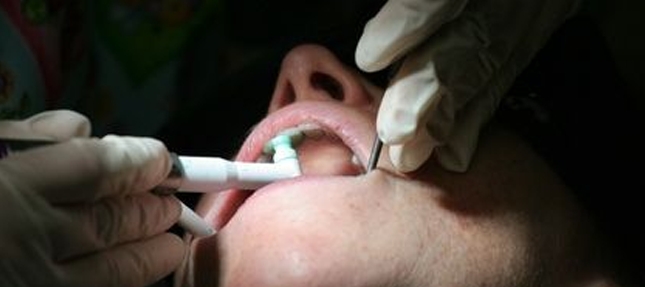- Prophy: Patients diagnosed with a healthy mouth condition receive a prophylaxis or healthy mouth cleaning — the kind that most insurance companies cover. This procedure removes plaque on the teeth and at the gum line.
- Full Mouth Debridement: Patients diagnosed with gingivitis, a reversible form of periodontal disease, typically require a full mouth debridement to remove build-up on the teeth so a full assessment can be conducted. Afterward, many patients return to a healthy mouth condition.
- Scaling & Root Planing (SRP): Patients diagnosed with active periodontal disease cannot benefit from a healthy mouth cleaning because they require treatment above and below the gum line. These patients generally receive SRP, a non-surgical treatment that removes build-up, smooths out exposed root surfaces and may include the application of localized antibiotics and fluoride as well. SRP often takes several visits to complete and ongoing periodontal maintenance is prescribed at regular intervals afterward.
Because periodontal (gum) disease is so common in adults, the standard of care for dental cleanings has changed significantly. Limiting treatment to what your insurance covers could prevent you from receiving proper dental care.


